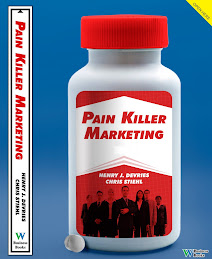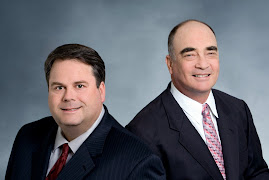 Hurricane Irene is moving through eastern Canada and out to sea just as fast as the storm moved into North Carolina, New Jersey and New England, leaving behind a mess to clean up. Over 20 people died in only the third hurricane to make landfall in New Jersey in the past 200 years. There was an estimated $7 billion in damages; however, it could have been much worse. As bad as it was, some of the predictions and fears for destruction in highly populated areas were not realized. This photo is of flooding in New Jersey.
Hurricane Irene is moving through eastern Canada and out to sea just as fast as the storm moved into North Carolina, New Jersey and New England, leaving behind a mess to clean up. Over 20 people died in only the third hurricane to make landfall in New Jersey in the past 200 years. There was an estimated $7 billion in damages; however, it could have been much worse. As bad as it was, some of the predictions and fears for destruction in highly populated areas were not realized. This photo is of flooding in New Jersey.Monday, August 29, 2011
Hurricane Irene - Lessons for Business
 Hurricane Irene is moving through eastern Canada and out to sea just as fast as the storm moved into North Carolina, New Jersey and New England, leaving behind a mess to clean up. Over 20 people died in only the third hurricane to make landfall in New Jersey in the past 200 years. There was an estimated $7 billion in damages; however, it could have been much worse. As bad as it was, some of the predictions and fears for destruction in highly populated areas were not realized. This photo is of flooding in New Jersey.
Hurricane Irene is moving through eastern Canada and out to sea just as fast as the storm moved into North Carolina, New Jersey and New England, leaving behind a mess to clean up. Over 20 people died in only the third hurricane to make landfall in New Jersey in the past 200 years. There was an estimated $7 billion in damages; however, it could have been much worse. As bad as it was, some of the predictions and fears for destruction in highly populated areas were not realized. This photo is of flooding in New Jersey.Saturday, April 16, 2011
Does Higher Customer Satisfaction Always Mean More Sales?

In brief, the answer is “No!” – You must do more than merely drive customer satisfaction scores up. As an illustration, consider the Cadillac Brougham of the 1980s. The design of this automobile had virtually no changes from 1978 through 1992. During most of those years, I was working at Cadillac. The result? The people who loved that car kept buying it, through several lifetimes of automobiles (typically 2 to 5 years of ownership). They tended to be very loyal. During that ten-year plus span of time, the average Cadillac buyer aged almost ten years as well. Customer satisfaction was going up for this car. Those who lived long enough bought several and loved each one. However, sales went down!
We were experiencing a diminishing, perhaps dying (literally) market of customers who loved our product. Thus, despite the notion that satisfying customers leads to increased sales, it is not merely the driving up of the scores that delivers sales. You must also have exciting products that attract and please new customers as well. By the time the Brougham was significantly altered, many of the original target market had died. It had been 14 years. Even though these buyers loved that car, we needed to attract a new audience to maintain or increase sales.
Thus, increasing customer satisfaction scores is not enough. Remember, these scores come after the fact, sometimes one or more years after purchase. They can testify to the initial purchase process and design, as well as customer service. However, what you want is increasing scores AND increasing sales. This necessarily means product enhancements and service enhancements to attract and satisfy new customers, with new “pains.”
Have you experienced the phenomenon of increased customer satisfaction and decreasing sales?
Wednesday, February 16, 2011
Pain Killer Marketing: Egypt, the Battleship Maine and Market Research -...
Tuesday, February 15, 2011
Egypt, the Battleship Maine and Market Research - A Question of Ethics?
 The Battleship Maine was sunk in Havana harbor 113 years ago today, sparking the US public to get behind the Spanish-American war. Was US public opinion galvanized by the "yellow press" over an accident in a coal bin?
The Battleship Maine was sunk in Havana harbor 113 years ago today, sparking the US public to get behind the Spanish-American war. Was US public opinion galvanized by the "yellow press" over an accident in a coal bin?We all watched in wonder as the events in Egypt unfolded in recent weeks. What was remarkable for a lot of reasons was the power of social networking. The deaths and beatings of individuals became symbolic of the experience of the population, they took on much greater meaning than merely individual incidents.
Social networking is obviously extremely powerful. However, what is the power of market research done on the social networks? Target marketing for advertisements and new contacts has been prevalent for some time, but are there any ethical concerns? Can we adequately measure emotions and their representativeness or strengh through this medium? Can we manipulate it to our will?
I believe this Dilbert illustrates one of my concerns well: should research be done because it can be done, or are there other issues at stake? Is there a moral high ground in this discussion?
I couldn't help but wonder, as the events in Egypt unfolded, what if someone were to gain enough information about each of us through our computers (websites visited, items purchased, videos searched for or watched on YouTube) to be able to activate our "hot buttons" to their own ends? What information should be sacred, if any? How would we choose to protect it?
Does entering the "world wide web" abdicate personal privacy through the act of accessing the web itself? Some might say, "Yes. Having access guarantees access by others to you."
There are laws and practices in place in market research for "informed consent" and similar ethical standards that apply to performing research activities with humans. Does the same logic apply to what you can do with data they provide by accessing websites or social networking sites?
What about the images they see or access on the screen? We have all received emails and images that were later shown to be incorrect or false by Snopes.com and similar services. The only way to prevent history from repeating itself is to study history, to learn and listen to the past. "Remember the Maine" was the cry in the US in 1898. The sinking of the Battleship Maine (and the 266 American sailors lost) in Havana served as the catalyst for the Spanish-American War. It was later shown that it was somewhat dubious that the Spanish had anything to do with the sinking, but that was 13 years after the war. I am somewhat sensitive on this issue as I lost a great great uncle on board the Maine. Was he killed in an accident (likely) or an act of war?
So, what are we to do to avoid being misled or abused by researchers or marketers? To be sure, the Egyptians had many reasons to reject their leadership. The millions of Egyptians who accessed the information about demonstrations on Facebook felt empowered to act. What if they had been researched and empowered in a different way? What would be ethical to find out about them, if you wanted to do so? What should we be allowed to access as researchers and what should be protected? How would we guarantee protection?

